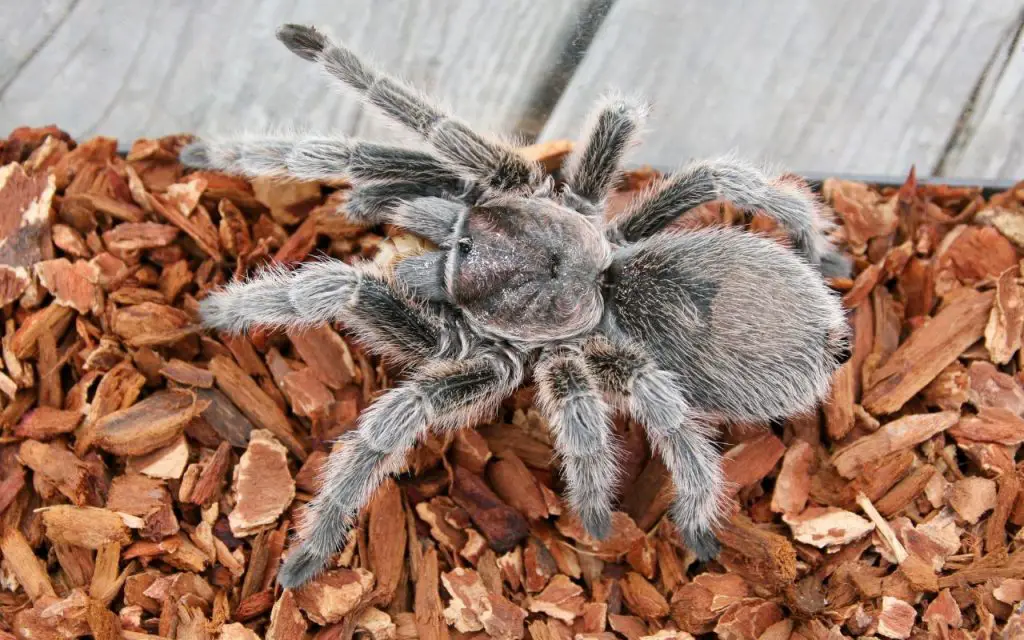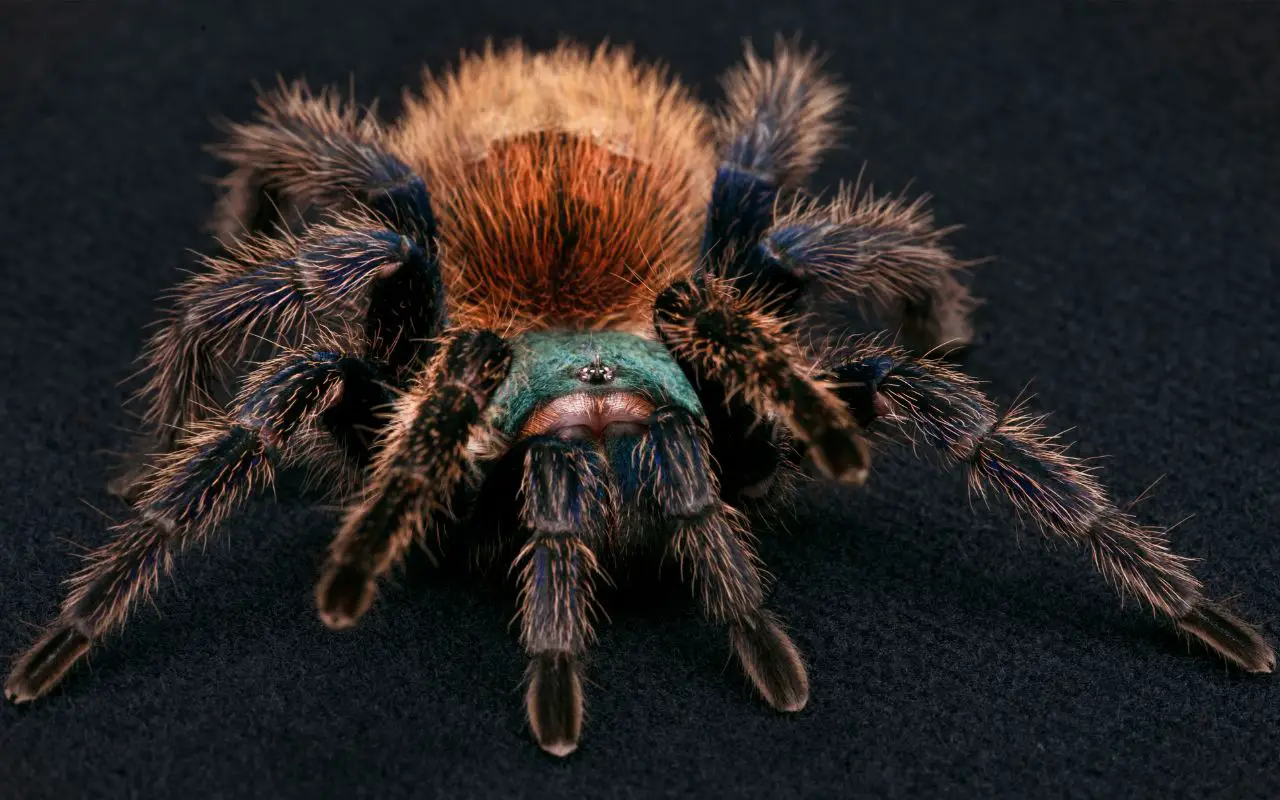Last updated on February 1st, 2023 at 10:07 am
You may wonder: do tarantulas need a heat lamp? Well, only if your house gets cold. Even then, heat mats are a better option…
Heat lamps are not good for tarantulas. In fact – they can kill them! Some people use heat mats with thermoostats for their tarantulas, but this method requires a lot of finesse and experimentation. If you are unsure about the heat mat method, talk to seasoned tarantula keepers. Heat mats work best for large T enclosures. They also tend to dry out the tarantula if you aren’t careful.
How warm should a tarantula enclosure be?
The answer to the question, “How warm should a tarantula cage be?” depends on what species of tarantula you have. Generally, they like temperatures around 27C, but you may need to add a heating mat. You should avoid using heat lamps as they dry out the tarantula quickly. Space heaters are another option. They can be placed in a single room to achieve the right temperature.
Room heaters or space heaters can be used to raise the temperature in the tarantula’s enclosure. However, be sure to choose a unit with an automatic off-switch and temperature regulator. Room heaters can get quite hot, so you should watch the temperature constantly. Also, make sure to place a thermometer in the tarantula’s enclosure to ensure the right temperature for the tarantula.
When choosing a heating pad (if you need to), you should ensure that it is of high quality. Try to choose one with a temperature gradient, as tarantulas naturally adjust their body temperature.
Try to keep the tank temperature a few degrees higher or lower, depending on the season. It is best to buy a quality unit, which will give you years of reliable heating. It is also best to keep a close eye on the temperature of the tank so you can monitor any changes in your tarantula’s health and well-being.
One of the main concerns of tarantula owners is the danger of their pets freezing to death. While the temperature of their enclosure is important, they must also be aware that they can lose their appetite and condition if it becomes too cold. If the temperature drops too low, the tarantula may stay in the warmest part of the tank and not venture into the cooler areas.
Things to consider:
- a heat lamp may dry out your tarantula and kill it
- a heat mat may work, but must only be used with a thermostat
- a thermometer should be inside the enclosure to monitor temperature
- most tarantulas only need a mat if your house gets colder than 70F during winter

Tarantula heat lamp
For some reason, a lot of resources recommend using a heat lamp for tarantulas. It’s not a good idea though, as it can kill them through dehydration. If your tarantula is really cold (below 60F), the best option is a small heat mat instead, mounted to the wall of the enclosure and monitored closely with a thermometer and thermostat.
A tarantula heat mat can provide the right temperature for your reptile. However, you should be aware that this type of mat can overheat your enclosure, so it is important that you only use a mat if it is really necessary.
In general, reptile heat mats run between four and twenty-four watts. The bigger they are, the higher the temperature can get, but smaller mats tend to run colder. In such cases, a tarantula heat mat may be safer.
A heat mat is ideal for larger enclosures or glass tanks. However, it is difficult to fit a heat mat in a smaller tank, and many cages are made of plastic. Plastic is sensitive to high temperatures, and heat lamps can melt or crack them. Glass tanks are less likely to experience this problem. But if you can’t find a suitable enclosure, you can buy a heat mat for your tarantula and use it to heat its enclosure.
While tarantulas prefer a temperature of about 21 to 24 degrees Celsius (70-75F), they will tolerate a higher or cooler temperature for short periods of time. They may not grow as quickly in a cooler home, as lower temperatures slow down their metabolism and appetite.

Best heat source for tarantula
Space heaters are a great option for heating your tarantula’s enclosure – or your tarantula room if you have lots of them. Oil-filled electric space heaters and oscillating heating fans are both suitable choices, and most come with timers and built-in thermostats.
Make sure you do your research to find the most cost-effective heater for your tarantula, and avoid using heat rocks, mats, or pads from pet stores whenever possible, which can cause hot spots and potentially harm your tarantula.
A temperature gun is a useful tool for monitoring the temperatures of a tarantula’s tank and its surroundings. These devices can measure surface temperatures from below freezing to over 716 degrees Fahrenheit. You can also use a thermometer with a probe that is designed to be attached to the tank, and only buy a reputable brand.
Generally, tarantulas prefer an ambient temperature of 70 to 75 degrees Fahrenheit. However, some tropical species may require a higher or lower temperature for long periods. If you’re unsure of what temperature your tarantula is used to, you can try keeping it in a 67-70 degree home.

Tarantula heat mat placement
Choosing the right tarantula heat mat placement is crucial for your reptile’s health. Direct heat sources can be harmful to tarantulas, but heat mats can help provide secondary heat. You can also use a space heater for your tarantula’s enclosure. An oil-filled radiator style heater is safe and effective for this purpose. If you want to avoid the risk of overheating your reptile, choose a low-powered heater, placed several feet from its enclosure.
The downside of placing your heat mat beneath your tarantula’s substrate is that it reduces the amount of heat that gets to your reptile. Heaters can overheat, and many have even ruptured glass because of overheating. Therefore, attaching the heater to the side of your tarantula’s cage is a better choice.
How can I tell if my tarantula is dehydrated?
If your tarantula begins to hunch over and curl its legs under its body, it is most likely dehydrated. While there are many ways to revive a tarantula, a popular method is making a mini sauna.
To make a mini sauna, you will need a small plastic container with a lid. Place paper towels in the bottom of the container. Put the container in a warm area (not more than 75-80F) so that the water will evaporate. Putting the spider is this very damp environment will help it rehydrate quickly.
The first sign of dehydration is a shriveled abdomen. This is the most obvious sign of a health problem. It is also important to observe if your tarantula curls its legs underneath its body. Your tarantula may appear limp and sluggish, and may exhibit symptoms of death or molting.
Signs of dehydration include:
- shrivelled abdomen
- legs curled under body
- extreme lethargy
- unable to move more than slightly

What happens if a tarantula gets too cold?
If a tarantula is too cold, it will start to lose its body weight and overall condition. It will stay in the warmest part of the tank or a spot with a heat mat. If the temperature stays too cold for a longer period of time, you should take steps to warm it up.
The best way to maintain an ideal temperature for your tarantula is to provide a heat source if its enclosure drops below 65-70F. Make sure to do some research and find one that fits your needs and your budget. Be sure to avoid heating individual tanks or tarantulas using heat lamps or heat rocks. These can produce hot spots and may even kill the tarantula.
When temperatures get too low, tarantulas lose their appetite. This can result in the loss of overall condition. In extreme cases, tarantulas may stop eating completely. To avoid this scenario, make sure to monitor the temperature in your tarantula tank constantly. And if you are worried about the cold, remember that it can even cause death!







